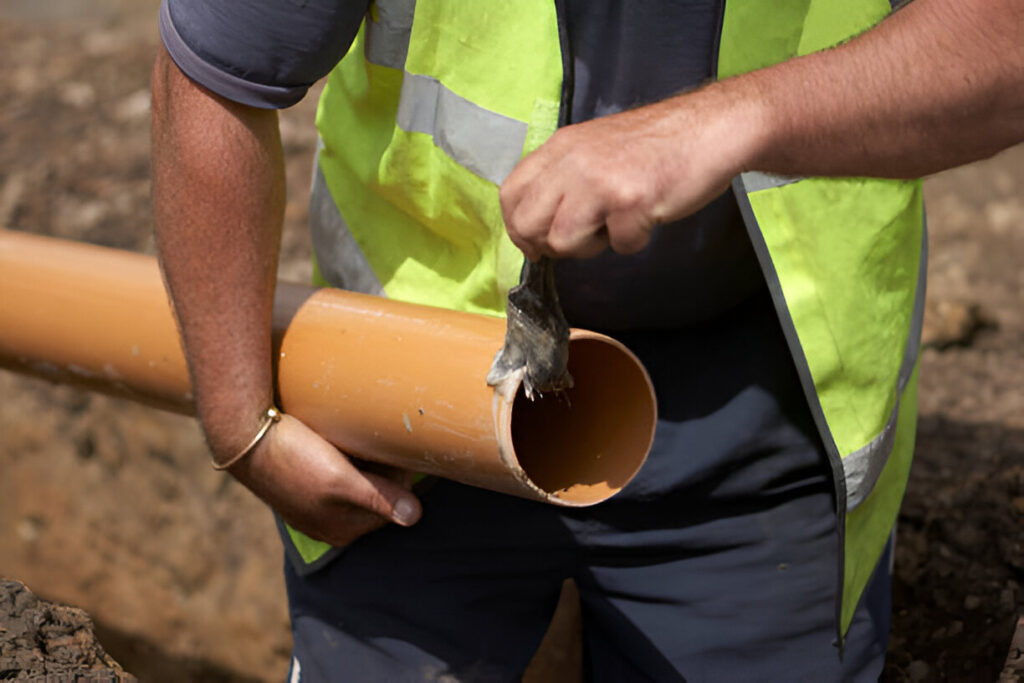Owning a home brings a bunch of duties, and keeping your plumbing in good shape is a big one. We often forget about pipes since we can’t see them—until problems pop up. Spotting when you need new pipes can help you avoid expensive damage and future troubles, whether you’re facing constant leaks of weird-colored water, or old pipes.
This article will cover signs that your pipes might need replacing common types of pipes found in houses, and what to expect when you replace them.
Contents
Spotting the Red Flags
Pipes won’t last forever. They can show signs of wear you shouldn’t ignore. Persistent leaks are a common indicator. If you often call a plumber to fix small issues replacing your pipes might save you money in the long run. You should also watch out for low water pressure rusty water, or strange sounds from your plumbing.
Keep an eye on exposed pipes for visible corrosion or discoloration. Some surface oxidation is normal but flaking metal or green stains can point to deeper problems. If you live in an older home with its original plumbing, it’s a good idea to have a pro check your pipes’ condition.
Understanding Pipe Materials and Lifespan
The pipes in your house have a big impact on how long they’ll last. Older homes built before the 1960s often have galvanized steel pipes. These work for 40 to 50 years, but they can rust and get clogged up. Copper pipes came along in the mid-1900s. They tend to be more dependable and can stick around for 50 years or more. Newer houses might have PEX pipes. PEX bends, doesn’t get scaly buildup, and lasts about 40 years.
Knowing what your pipes are made of helps you guess when you might need new ones. If you’re not sure, a pro plumber can check out your pipes and tell you what’s what based on how old they are and what shape they’re in.
Planning for a Replacement Project
Replacing pipes is a big job, but good planning can make it go by smooth. The project’s size depends on your house, how easy it is to reach your pipes, and if you’re changing all or just some of the system. Often, plumbers can use new methods to cause less mess, like putting in pipes without digging or running them through walls and ceilings.
Before you begin, you should get a full quote and schedule from the company you hire. Ask them about permits, guarantees, and how the work will affect your water supply. Clear talks and a solid plan will help to keep the project on track and meet what you want.
Steps to Prevent Problems and Take Care of Your Pipes Long-Term
Even with pipes in good condition regular upkeep can lengthen their life and stop future problems. Easy tasks like checking water pressure skipping harsh drain cleaners and booking routine checks can make a big difference. For homes in hard water areas, adding a water softener might help cut down on mineral buildup that harms pipes as time passes.
Keeping your plumbing safe from contamination also matters a lot. Expert backflow services guard your water supply by stopping reverse flow from outside sources, which can happen when pressure changes or systems fail. These services prove useful for homes with sprinkler systems or other linked connections.
When to Ask for Expert Help
Although handy homeowners can tackle some plumbing jobs, pipe replacement should be handled by licensed experts. A skilled plumber can check your system, suggest the best materials, and do the work well. They’ll also make sure your project follows local building rules and requirements.
If you’re not sure if your pipes need to be replaced, getting advice can help. Many plumbing businesses offer checks and assessments that can help you make a smart choice without jumping into a full replacement right away.
Conclusion
Putting in new pipes for your house costs a lot, but it can keep your property safe and make your life better. Keep an eye out for warning signs, know what your pipes are made of, and team up with plumbers you trust to make smart choices about your home’s plumbing. Whether you’re thinking ahead or dealing with a problem right now, understanding what’s involved will help you handle the process and without stress.

